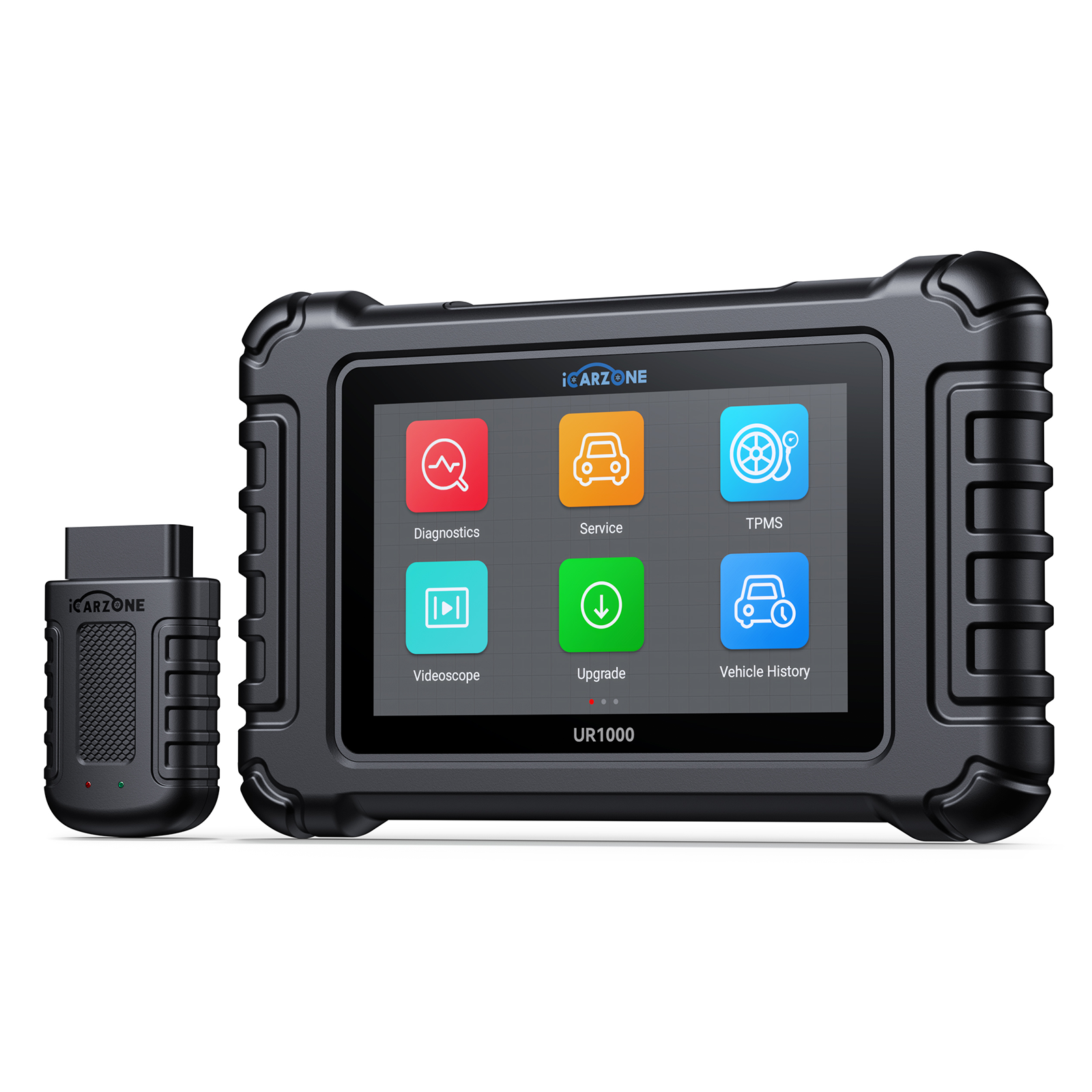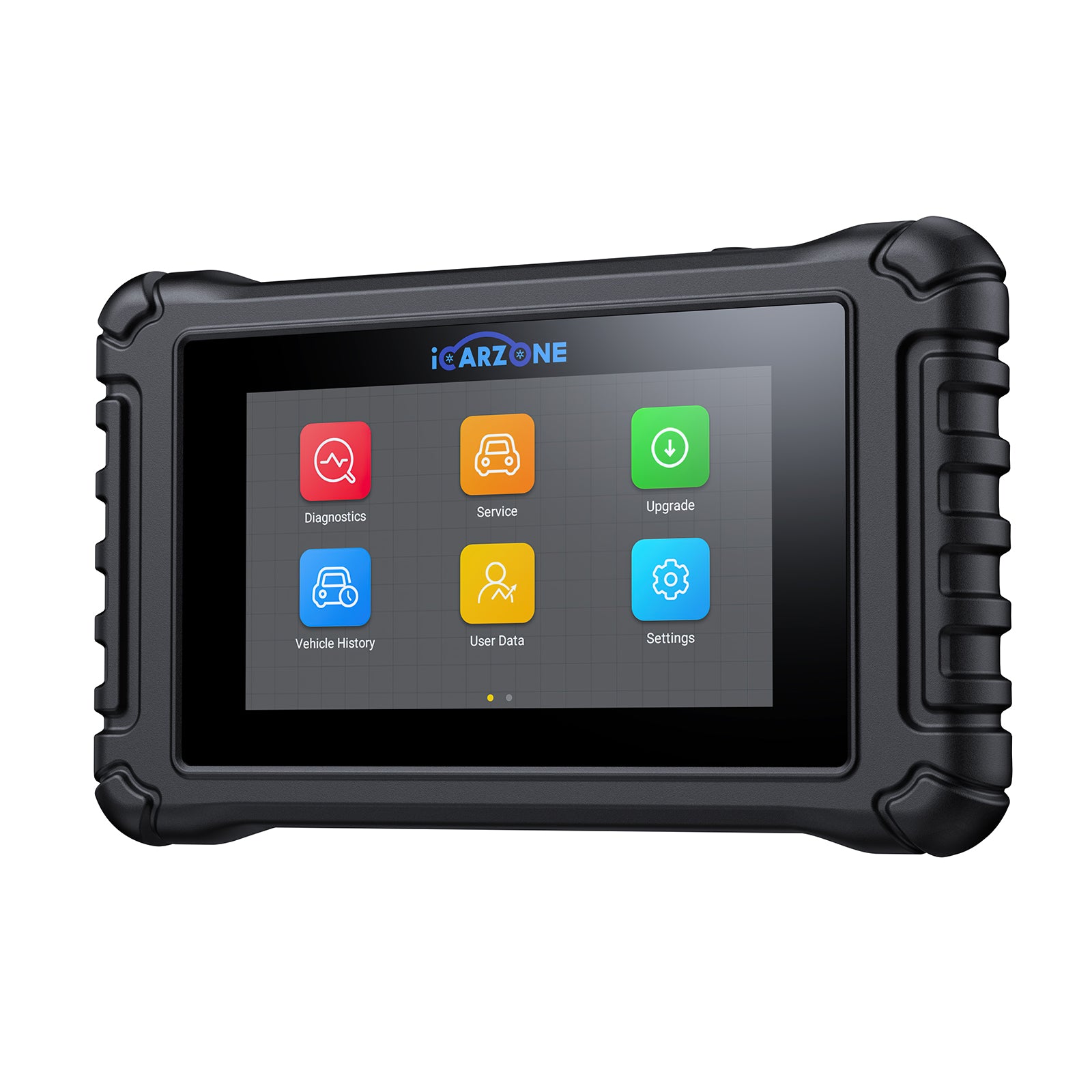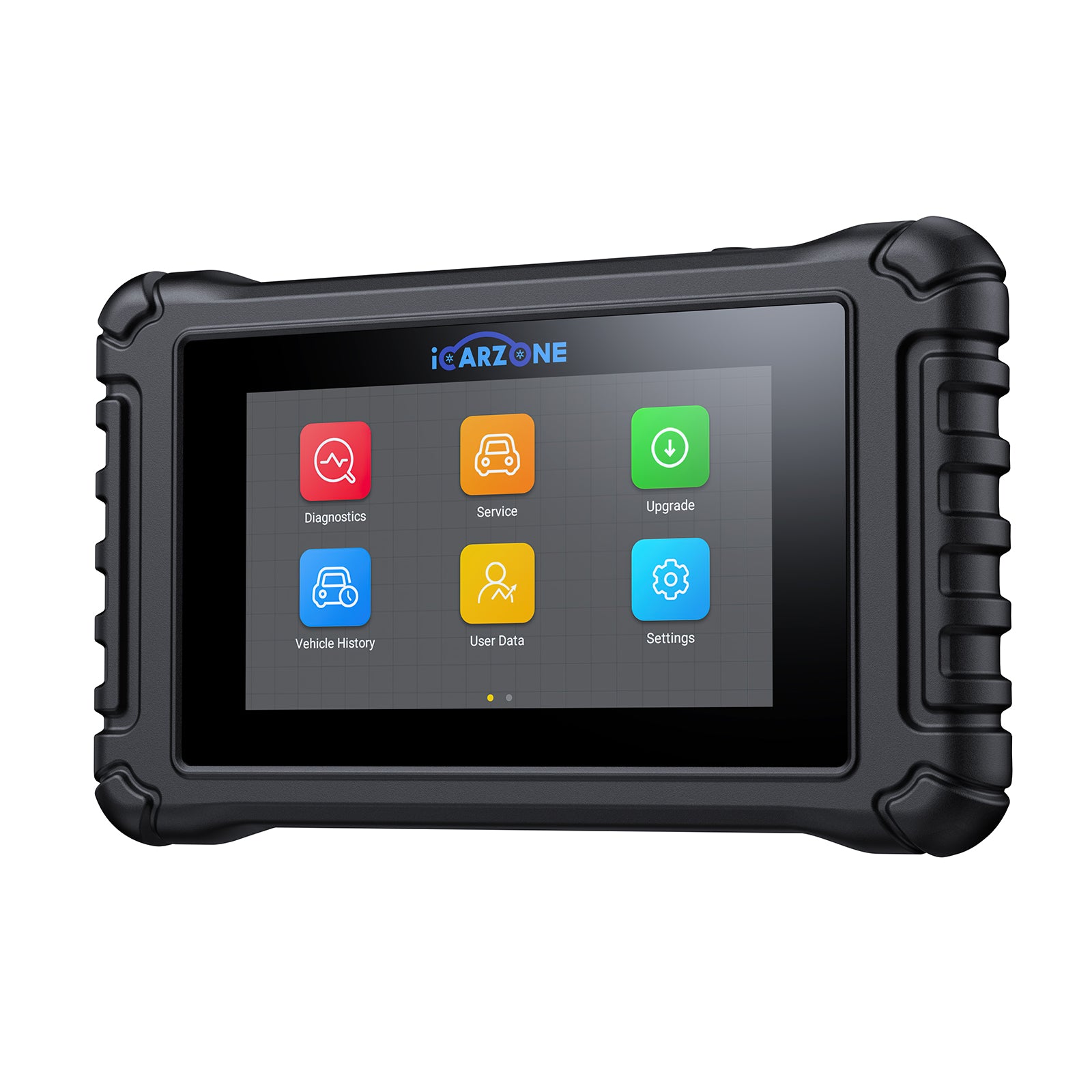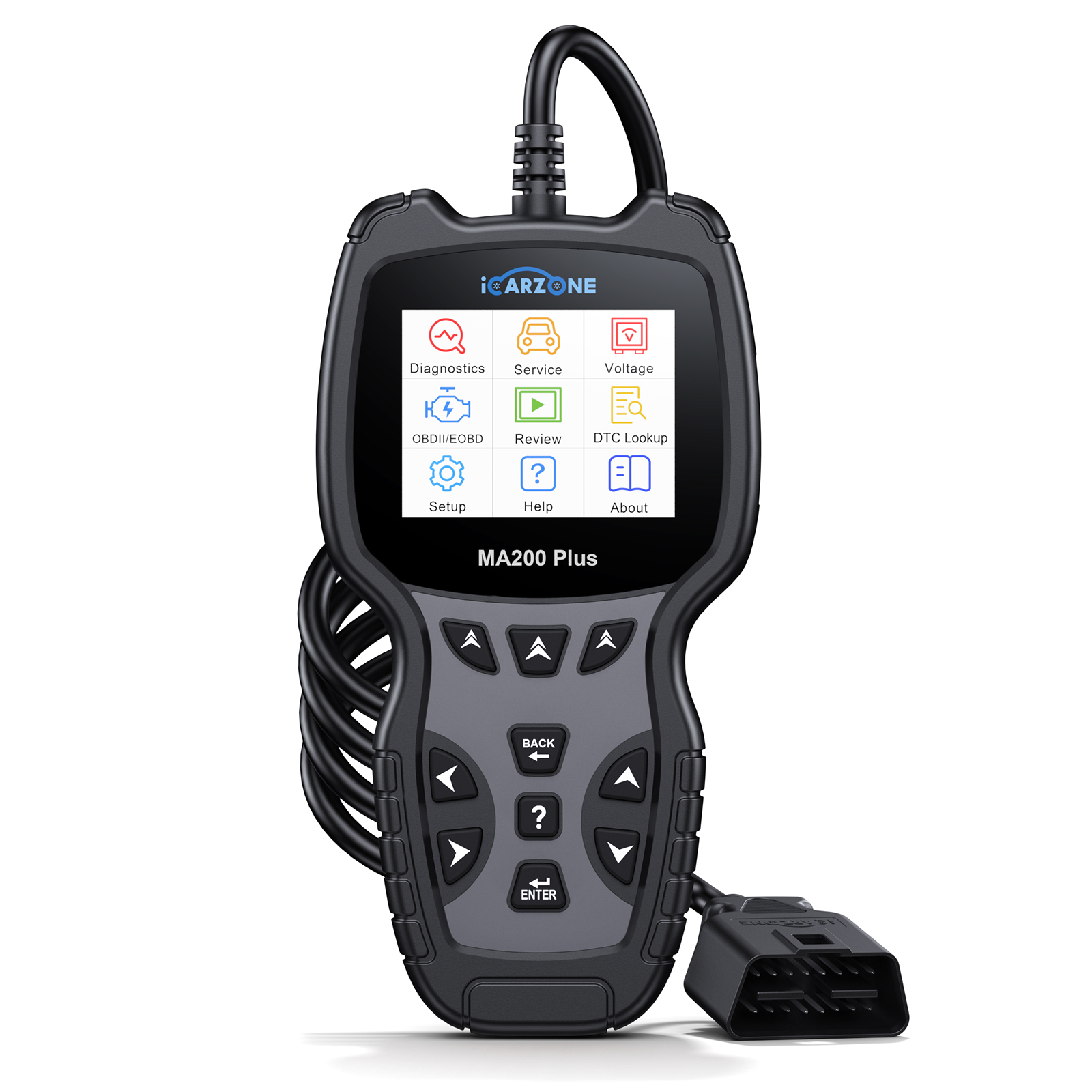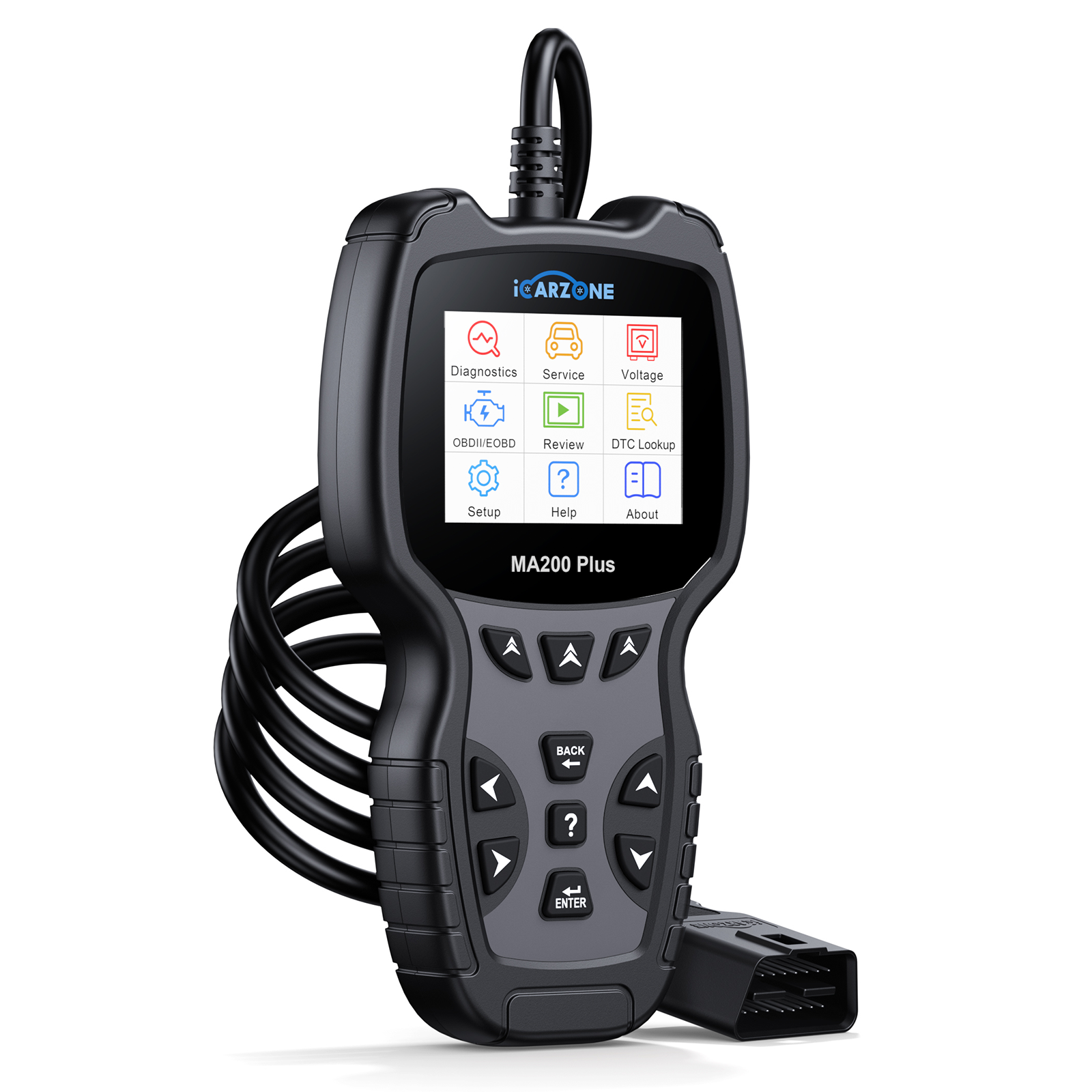P0234 Turbocharger Boost Pressure Too High: FIX P0234 in Ford F-150 with ICARZONE UR1000

P0234: Turbocharger Boost Pressure Too High
Solve P0234 in Ford F-150 EcoBoost. Learn causes, symptoms, and fixes for turbo overboost using the ICARZONE UR1000 diagnostic tool.
Get ICARZONE UR1000 Now1. What is P0234?
P0234 is a universal Diagnostic Trouble Code indicating Turbocharger/Supercharger Boost Pressure Too High. In Ford F-150 EcoBoost models, the ECM monitors boost pressure via the Manifold Absolute Pressure (MAP) sensor and Boost Pressure Sensor (BPS), expecting a maximum of 20–22 psi (3.5L EcoBoost) or 18–20 psi (2.7L EcoBoost). P0234 triggers when pressure exceeds this threshold by 5+ psi for 2+ seconds, signaling an overboost condition.
Why It Matters for Ford F-150 EcoBoost
The F-150 EcoBoost’s twin-turbo V6 engines (2.7L/3.5L) rely on precise boost control for power and durability. Overboost (P0234) strains turbo components—compressor wheels, wastegates, and intercoolers—increasing risk of premature failure. Left unaddressed, it can cause turbocharger seizure (common in high-mileage 3.5L models) or blown head gaskets. The ECM mitigates damage by activating limp mode, but this severely limits towing capacity (critical for F-150 owners).

2. Common Causes in Ford F-150 EcoBoost
P0234 is the #1 turbo-related code for 2015–2024 F-150 EcoBoost owners, with distinct triggers based on engine variant. Below are verified causes with real-world case studies:
- Stuck Wastegate Actuator (3.5L EcoBoost) — Example: 2018 F-150 3.5L owner reported P0234 and a "whooshing" turbo noise. ICARZONE UR1000’s Boost Pressure Live Data showed 28 psi (7 psi over max). Inspection revealed a seized wastegate actuator (Ford part #BL3Z-6K682-A) due to carbon buildup—common in F-150s with 100,000+ miles used for towing.
- Boost Leak in Intercooler Hoses (2.7L EcoBoost) — Example: 2020 F-150 2.7L developed P0234 after off-roading. UR1000’s Leak Detection Test identified a cracked intercooler charge pipe (a known 2.7L weak point). The leak caused the ECM to overcompensate, pushing boost to 25 psi. Replacing the pipe (Ford part #HC3Z-6C646-A) resolved the issue.
- Faulty Boost Pressure Sensor (BPS) — Example: 2021 F-150 3.5L Hybrid displayed intermittent P0234. UR1000’s Sensor Test showed erratic BPS readings (jumping from 15 psi to 24 psi at idle). Replacing the BPS (Ford part #BL3Z-9F479-A) and resetting adaptive values via UR1000 fixed the false overboost trigger.
- Aftermarket Tune Overboost — Example: 2019 F-150 Raptor (3.5L High-Output) with a custom tune developed P0234. UR1000’s ECU Parameter Scan revealed the tune was set to 26 psi (4 psi over Ford’s limit). Reverting to Ford’s factory calibration (via UR1000) eliminated P0234.
- Wastegate Solenoid Failure — Example: 2017 F-150 3.5L with 85,000 miles showed P0234 alongside P0299. UR1000’s Solenoid Test confirmed the wastegate solenoid (Ford part #BL3Z-9C968-A) wasn’t regulating boost—replacing it restored normal pressure.

3. Key Symptoms in Ford F-150 EcoBoost
F-150 EcoBoost owners typically notice these P0234-specific symptoms, which worsen under load (towing, hauling, or highway passing):
- Check Engine Light illuminated with "Turbocharger Overboost" message (F-150’s instrument cluster)
- Loud "whooshing" or "screeching" noise from the turbocharger (sign of excessive pressure)
- Limp mode activation (engine power capped at 50%, maximum speed limited to 65 mph) in 10-speed auto models
- Reduced towing capacity—F-150s with P0234 often can’t haul more than 3,000 lbs (vs. 13,200 lbs max)
- Intermittent "boost spikes"—sudden surges of power followed by immediate power loss
- Increased exhaust smoke (black or blue) from over-fueling to cool the turbo
- Turbo lag or delayed response after limp mode is triggered
Image suggestion: Ford F-150 instrument cluster showing "Turbocharger Overboost" warning and P0234 code
4. F-150 EcoBoost Models Prone to P0234
Ford’s service data shows these 2015–2024 F-150 EcoBoost variants have the highest P0234 incidence, linked to turbo design and usage patterns:
- 2015–2020 F-150 3.5L EcoBoost (Gen 2) — 38% of P0234 cases (seized wastegate actuators)
- 2017–2024 F-150 Raptor 3.5L High-Output EcoBoost — 27% of cases (aftermarket tune overboost)
- 2018–2024 F-150 2.7L EcoBoost — 19% of cases (intercooler hose leaks)
- 2021–2024 F-150 3.5L PowerBoost Hybrid — 16% of cases (BPS sensor glitches)
Ford issued two critical TSBs for P0234: TSB 21-2249 (2015–2020 3.5L EcoBoost) and TSB 22-1028 (2021–2024 PowerBoost Hybrid), both recommending wastegate actuator or BPS replacement.
5. Diagnostic Steps (F-150 EcoBoost Focus) with ICARZONE UR1000
Diagnosing P0234 in F-150 EcoBoost requires testing boost pressure, sensors, and turbo components—here’s how to use ICARZONE UR1000 for Ford-specific accuracy:
| Step | Action with UR1000 | F-150 EcoBoost-Specific Goal | Pass/Fail Criteria |
|---|---|---|---|
| 1 | Full System Scan > Select "Ford" > "F-150" > "EcoBoost [2.7L/3.5L]" | Confirm P0234 and check for related codes (P0299, P0121, P0191) | Pass: Only P0234 present | Fail: Multiple turbo codes (system-wide issue) |
| 2 | Live Data > "Turbo" > "Boost Pressure Actual" & "Boost Pressure Desired" | Monitor pressure at idle (14.7 psi) and WOT (20–22 psi for 3.5L; 18–20 psi for 2.7L) | Pass: Actual ≈ Desired | Fail: Actual > Desired by 5+ psi (overboost) |
| 3 | Advanced Diagnostics > "Turbo System Test" > "Wastegate Actuator Test" | Verify wastegate opens/closes in response to ECM signals (Ford-specific protocol) | Pass: Actuator moves smoothly | Fail: No movement (seized) or delayed response |
| 4 | Service Functions > "TSB Lookup" > Enter F-150 VIN | Check for Ford TSB 21-2249 (3.5L) or 22-1028 (PowerBoost) | Pass: No applicable TSBs | Fail: TSB exists (requires actuator/sensor replacement) |
| 5 | Component Test > "Boost Pressure Sensor (BPS) Calibration" | Validate BPS accuracy (should match MAP sensor readings within 1 psi) | Pass: BPS ≈ MAP | Fail: BPS off by 3+ psi (faulty sensor) |
Case Example: A 2019 F-150 3.5L passed Steps 1–2 but failed Step 3. UR1000’s Actuator Resistance Test showed 15Ω (normal: 8–10Ω), confirming a seized wastegate. Replacing the actuator (Ford part #BL3Z-6K682-A) and performing a UR1000 Turbo Relearn restored normal boost, and P0234 cleared after a 30-mile towing test.

6. Fixes & Execution for Ford F-150 EcoBoost
P0234 fixes for F-150 EcoBoost vary by root cause, but Ford recommends these ICARZONE UR1000-integrated solutions:
- Replace Wastegate Actuator — For 3.5L EcoBoost (2015–2020), use OEM Ford actuator #BL3Z-6K682-A. For 2021+ models, use #HL3Z-6K682-A. After installation, run UR1000’s Wastegate Relearn to calibrate the new unit—critical for 10-speed auto F-150s.
- Repair Boost Leaks — For cracked intercooler hoses/pipes (2.7L/3.5L), replace with OEM parts: #HC3Z-6C646-A (charge pipe) or #BL3Z-6A666-A (intercooler hoses). Use UR1000’s Leak Detection to confirm no remaining leaks.
- Replace Boost Pressure Sensor (BPS) — For faulty BPS, use Ford part #BL3Z-9F479-A (compatible with all EcoBoost variants). Reset adaptive values via UR1000 after replacement to eliminate false readings.
- ECU Calibration Reset — For tune-induced P0234, use UR1000’s Ford Factory Reset to revert to OEM ECM settings. Avoid aftermarket tunes that exceed Ford’s 22 psi max boost for 3.5L models.
- Clean Wastegate Solenoid — For mild carbon buildup, remove the solenoid (Ford part #BL3Z-9C968-A) and clean with Ford-approved solvent (part #PM-21-A). Use UR1000’s Solenoid Test to verify functionality post-cleaning.
F-150 EcoBoost-Specific Workflow
- Always test boost pressure with UR1000 before replacing parts—50% of F-150 P0234 cases are leaks/cleaning issues, not failed actuators (saves $300–$500 on unnecessary parts).
- For 3.5L EcoBoost (2015–2020), inspect the wastegate actuator first—Ford’s TSB 21-2249 confirms this is the #1 failure point for P0234.
- After repairs, perform a "Towing Validation" test: haul a 2,000-lb load for 20 miles and monitor boost via UR1000 to ensure pressure stays within Ford’s limits.
7. Repair Costs & Safety Tips for F-150 EcoBoost
Critical Safety Precautions
- Allow the F-150’s turbo to cool for 10+ minutes before working on components—turbo housings reach 800°F+ during operation, causing severe burns.
- Never drive an F-150 with P0234 and limp mode—overboost can cause sudden turbo failure, leading to engine damage or loss of power.
- Use a torque wrench when reinstalling turbo components (Ford specs: actuator bolts = 18 ft-lbs; intercooler pipes = 12 ft-lbs) to avoid leaks.
- After repairs, clear codes with UR1000 and idle the engine for 5 minutes—this allows the ECM to relearn boost control parameters.
8. Preventive Maintenance for F-150 EcoBoost P0234
Ford F-150 EcoBoost owners can reduce P0234 risk with these Ford-recommended steps:
- Monthly Boost Pressure Checks — Use UR1000’s Live Data to monitor "Actual vs. Desired" boost; address variances >2 psi before P0234 triggers.
- Wastegate Actuator Service Every 60,000 Miles — For 3.5L EcoBoost, apply Ford-approved high-temp grease (part #XG-12) to the actuator rod to prevent seizing.
- Intercooler Hose Inspection Every 30,000 Miles — Check for cracks/loose clamps (especially in 2.7L models); replace hoses every 100,000 miles as preventive maintenance.
- Use Ford-Approved Oil — EcoBoost engines require 5W-30 full synthetic oil (Ford part #XO-5W30-Q1); low-quality oil accelerates turbo carbon buildup.
- Turbo Cool-Down Period — Idle the F-150 for 3–5 minutes after towing or high-speed driving to reduce turbo heat stress.
9. Frequently Asked Questions
No, but aftermarket tunes that cause overboost will void the powertrain warranty. If under Ford’s 5-year/60,000-mile warranty, repair via a dealer to retain coverage for turbo components.
Yes—restricted airflow increases turbo backpressure, forcing the ECM to overboost. Replace the air filter every 30,000 miles (Ford part #FA-1926) or more often if driving in dusty conditions.
Yes—ICARZONE UR1000 supports all 2015–2024 F-150 EcoBoost variants, with dedicated Ford turbo diagnostic protocols for each engine.
1–2 hours for sensor/hose fixes; 3–4 hours for wastegate actuator replacement. UR1000’s diagnostic tools reduce time by 40% vs. generic scanners.
10. Summary
P0234 (turbo boost pressure too high) is a critical but fixable issue in 2015–2024 Ford F-150 EcoBoost models, caused by seized wastegates, boost leaks, or faulty sensors. The ICARZONE UR1000 simplifies diagnosis with Ford-specific tools like boost pressure monitoring and wastegate testing, eliminating guesswork and costly dealer visits. Most P0234 cases are resolved with actuator replacement or leak repairs—addressing the issue promptly prevents turbo damage and maintains the F-150’s towing capability, critical for EcoBoost owners.
Fix F-150 EcoBoost P0234 with ICARZONE UR1000
UR1000 is engineered for Ford’s EcoBoost turbo systems, offering boost live data, wastegate relearn, and TSB lookup to resolve P0234 fast. Save time and money—diagnose and fix your F-150 at home.
Order ICARZONE UR1000 Today



